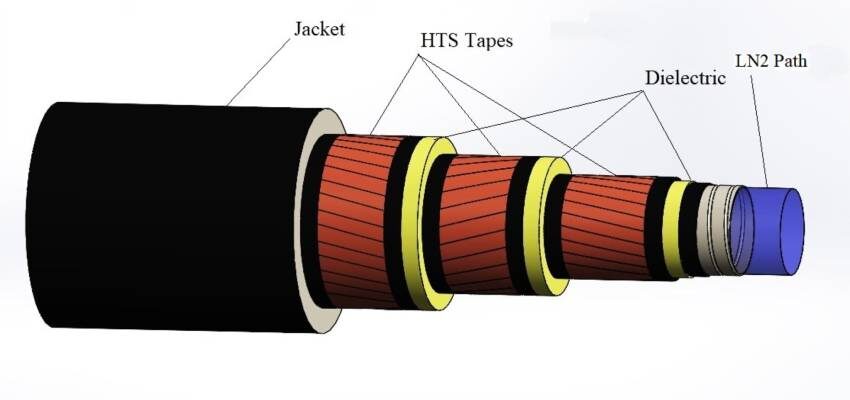
An accurate model of the high-temperature superconducting cable by using stochastic methods
Due to some disadvantages of early superconductors, called low-temperature superconductors (LTS), the application of some materials faced noticeable hindrances.
byAlireza Sadeghi, Seyyedmeysam Seyyedbarzegar

- Introduction
The discovery of superconductors was the beginning of multiple research directions, efforts, and funding to take the advantages of superconductors in physic, electronic, power engineering, and space programs. However, due to some disadvantages of early superconductors, called low-temperature superconductors (LTS), the application of these materials faced noticeable hindrances. To tackle these restrictions, many efforts have been accomplished.
Eventually, a brand-new type of superconductor with a high critical temperature and the critical field was discovered, a high-temperature superconductor (HTS). HTS materials revived the dream of large-scale application of superconductors in the scientific and industrial world [1]. Since the discovery of HTS materials and due to their high current capacity and low loss, many studies and projects have been funded to put these materials in work as an element of power grids or electrifications.
Among all available applications of superconductors, HTS cables are the most common and well-researched types. Countless R&D projects have been initiated worldwide not only to utilize HTS cables to the power delivery of loads, namely Albany [2], Yokohama [3], and Ampacity projects [4] but also to employ these cables as components of turbo-electric airplanes, propulsion ships, and electric trains. Generally speaking, the main objective of these projects is reducing AC loss to a minimum possible value and avoiding thermomechanical dissociations during normal and faulty circumstances.
To put it differently, by addressing these issues, large-scale utilization of HTS cables could be initiated. It worth noting that regularly the first step in any of these projects is the simulation of HTS cables. This step is conducted to attain a primary evaluation of cable performance under different circumstances and grid congestions.
The simulation phase is conductible through multiple methods, one is able to analyze the characteristics of the cable according to finite element-based methods, while other option is employment of circuit-based techniques. Finite element-based methods (FEM) are normally employed to model electromagnetic devices like synchronous generators, cables, fault current limiters, and many other elements of the power grid.







